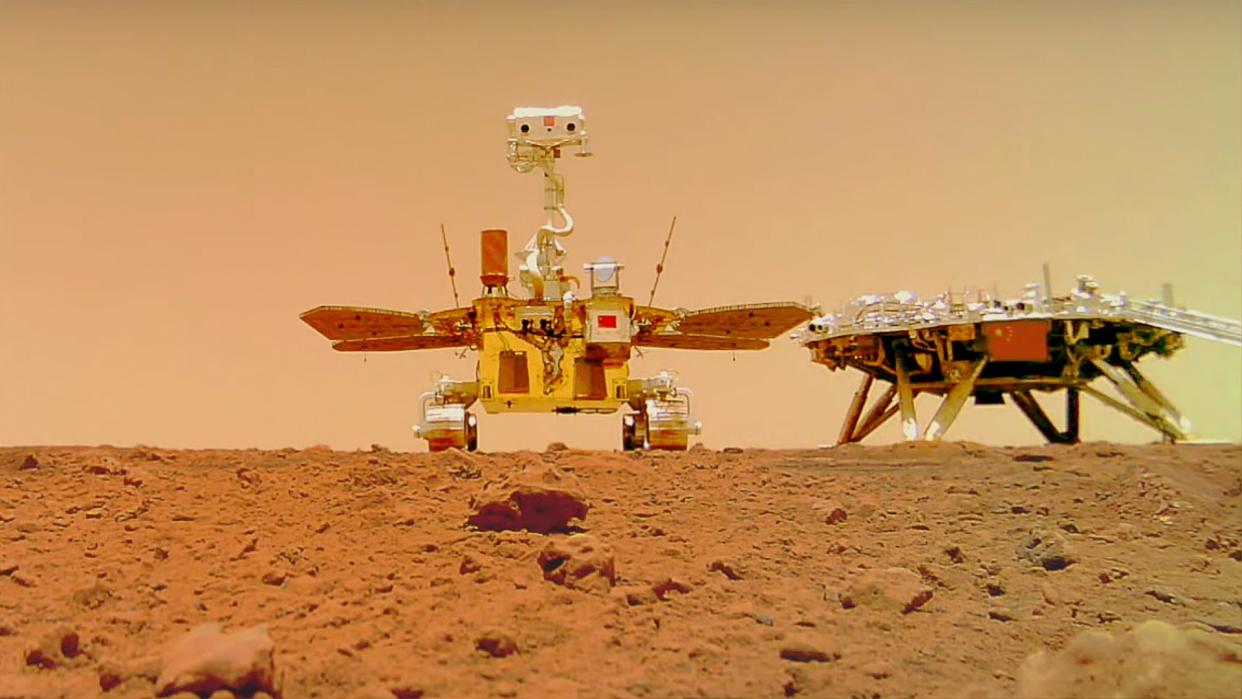Chinese scientists hold out hope for silent Zhurong Mars rover

China's Mars rover may be stuck, but scientists using data from the mission are still hopeful that the vehicle can reactivate and explore once more.
Zhurong, which is part of China's Tianwen 1 Mars mission, landed in Utopia Planitia in May 2021. The rover entered a dormant mode in May 2022, effectively allowing it to hibernate during winter in the planet's northern hemisphere.
It was supposed to autonomously resume activities in December last year, around the time of Mars' northern spring equinox, when temperatures and lighting conditions were more favorable for the solar-powered vehicle. That has not happened.
Related: The latest news about China's space program
However, Yi Xu, an associate professor at the Space Science Institute at Macau University of Science and Technology, told VICE World News that there may still be hope for Zhurong.
China has not commented on the status of Zhurong, but images from NASA's Mars Reconnaissance Orbiter (MRO) prove the rover has remained stationary for a while.
The MRO images show that "it's covered by the sand and the dust, so it definitely hurts its ability to transform sunlight to electricity," Xu said.
"We have to wait, because now it's spring, and later, that'd be the summer season on Mars. Then it should receive more sunlight and the temperature also increases," Yi said. "When the battery is fully charged, then the rover or the instrument may operate again."
Zhurong has active means of cleaning its solar arrays, but its period of inactivity in an area prone to dust storms has apparently impacted its ability to generate electricity and retain heat. Zhurong does not have a radioisotope heater unit, like other rovers including China's Yutu moon explorers, but instead has a pair of "windows" allowing a chemical called n-undecane to store heat energy.
RELATED STORIES:
— China's 1st Mars rover and Tianwen 1 orbiter may have gone silent
— China silent on fate of Zhurong Mars rover on 2nd anniversary of Tianwen 1 mission
— Strange circular dunes on Mars spotted in these NASA photos
The rover was expected to wake up autonomously when two conditions are met. These are key components reaching a temperature of greater than 5 degrees Fahrenheit (minus 15 degrees Celsius) and energy generation of greater than 140 watts.
Xu is a co-author of a recent paper that used data from Zhurong's ground-penetrating radar to build a picture of the layers immediately below the Martian surface and reveal complex layering.
Whether or not Zhurong rises again, the mission already exceeded its planned lifetime of three Earth months. The rover has also, like its companion Tianwen 1 orbiter, completed its primary science goals.
Follow us @Spacedotcom, or on Facebook and Instagram.

